Longido is situated about 80 km north of Arusha on the way to Nairobi, just at the foot of Longido mountain, which rises up steeply from the plains and forms an important orientation point for people in the wide surroundings. On the mountain and the surrounding plains the Maasai warriors wander about with their cattle, looking for pasture and water. Once a week, on Wednesdays, the cattle are herded to a cattle market in Longido town. Maasai families live in traditional bomas scattered over the area. In the early morning, women leave the boma to fetch water and collect firewood. Young children play around the mud houses and start at a very early age to take care of kids and lambs. An abundance of colorful birds can be found in the area. The startling major, the red and yellow barbet, the masked weaver, the silverbill and the secretary birds are some of the species to be seen. Longido is further well known for the presence of rare mammals that cannot be seen in any of the national parks. Besides the plains and the slopes of the mountain form the refuge for the gerenuk, the lesser kudu and the klipspringer. Among other mammals living around Longido are giraffes, zebras, gazelles, buffaloes, mongooses and some silver jackals.
Download PDF Read MoreTourists with strong legs longing for adventure can climb the 2690 meters high mountain. The first day you walk to the campsite of Kimokouwa.
Guided by Maasai warriors you leave the campsite early in the morning and follow narrow footpaths through a dense forest. After 3 hours you arrive at the “dawa ya supu” (medicine soup) viewpoint. From here you will follow the trails created by buffaloes to reach the top in another 2 hours climb. With loud cries the Maasais warn the buffaloes that people are coming to avoid dangerous encounters. On clear days you can look more than 200 km far and see all mountains of Northern Tanzania. The descent of the steep mountain is another challenge. In 3 hours time you arrive at the campsite, have a rest and in another hours and a half you reach the jeep road where a car is waiting for you. In the evening you enjoy a meal prepared by the FARAJA women’s group. On Wednesdays you can extend your stay with a visit to the bustling colorful cattle market.
GUIDES: Our guides are young Maasai who grew up in the area. They speak some English and further use hand signs to show you the beauty of Longido. They know all attractions and dangers, and have received tourism training. On walking safaris Maasai warriors armed with knives and spear protect you from animals.
FACILITIES:In Longido you can spend the night in guesthouses or put up a tent at campsites at the foot of the mountain. The guesthouses are simple, but clean, and always have a toilet and bathroom. On request warm water will be made for you. The FARAJA women’s group, who has developed a catering service for the campsites in the area, will prepare meals.
DEVELOPMENT FUNDSCattle diseases are one of the main problems the Maasai are facing in Longido. In each year around 1000 cows die, mainly due to tick-borne diseases. Since Maasai life depends on livestock, this creates a quite serious problem. A reduction of the herd size means lesser work, lesser income and lesser food. Preventing cattle diseases is of major importance to the Maasai. Regularly dipping will kill all ticks and eradicate tick-born diseases. The only cattle dip in Longido is however out of order. During socialist times the dip belonged to the whole community, and therefore no one really felt responsible for it and the dip became neglected. Now the Maasai have established a committee, which is going to rehabilitate the dip, this is almost finalized. Part of the income generated from tourism has been used for this purpose, and 15 water distribution points have been installed in Kimokowa village.
MTO WA MBU: Mto wa Mbu is situated on the way from Arusha to the National Parks in Northern Tanzania, just at the foot of the Rift Valley. Mto wa Mbu is the entry-port to Lake Manyara National Park, and also conveniently on the way to Ngorongoro Crater and Serengeti, which makes it an ideal rest place for most safari travelers.
The area around Mto wa Mbu was rather dry and thinly populated till the early fifties, when the first steps were made to irrigate the area. Within a few years hundreds of acres of new cultivable lands were created. The news of the fertile lands did spread rapidly throughout the country and from all remote corners people came to try their luck. Fruits and vegetables from all over Tanzania were introduced to the area for cultivation, and within a few decades the dry and empty plains were turned into a green semi-urban centre. The rapid population growth has turned this village into a melting pot of cultures. Nowhere else in Tanzania have so many tribes gathered in such a small area, and many people have still kept their traditions.
In Mto wa Mbu there are several campsites and guesthouses. In most of these places tourists can eat a meal and order a lunch box. During tours, visitors will have the opportunity of enjoying traditional cuisine prepared by local women in the village. Apart from the guesthouses and campsites in town, there are 3 high quality lodges on the edge of the Rift Valley that oversee Lake Manyara National park and the surrounding area.
The guides used in these tours grew up in Mto wa Mbu, and recently finished Manyara Secondary School. They can speak English and are familiar with the area. They will be happy to tell you interesting facts and stories about the different cultures, irrigation system and the various fruits and vegetables in the area. They want to gain experience and earn a small income by showing tourists the beauty of their area.
Farming Tour: Starting from the market, where you visit a Chagga family producing banana beer, you walk northwards passing many different farms. On your way you get explanation about the various fruits and vegetables growing in the area. Mzee Filipo, a farmer from Kigoma, will show you his oil press and tell you about the history of irrigation in the area. Your trip ends at a farm build by the Belgium Development Organization ACT, where you can visit their sunflower production and take marvelous pictures of colorful flower fields with the Rift Valley as background.
Papyrus Lake Tour: This walk starts 5 km north of Mto wa Mbu, where the Miwaleni waterfall that falls down from the Rift Valley has created a green oasis. Passing some small streams you walk in the direction of the Papyrus lake, from where the Rangi people collect the materials for the mats and baskets they make. On the way you can see rice farming and visit Sandawe families who still make the traditional bows and arrows for hunting. The walk can be extended with a climb to the waterfall at the Rift Valley.
Balaa Hill Tour:Starting from the center you walk in the northern direction. The farmers mainly grow bananas (30 varieties) and the big leaves provide a pleasant shade. On your way you can visit some farms and get explanations about the irrigation methods in the area. Finally, you can climb Balaa Hill, “the hill of misfortune”, in about 20 minutes, and enjoy the beautiful view over the green oasis over Mto wa Mbu. On the top, the guides will explain why the hill got its mysterious name. The walk can be extended with a visit to the Njoro springs, one of the main water sources for the area and a nearby waterfall.
One Day Walk: People who like walking can combine the 3 half-a-day tours in a one-day walk. Starting from the Mto wa Mbu market you go via the ACT to the Papyrus Lake. On your way back to Mto wa Mbu you walk along the foot of the Rift Valley, passing the Njoro springs and the Balaa Hill.
DEVELOPMENT PROJECTS:The Maasai women’s group is producing energy saving stoves, that use 3 times less firewood and therefore help to preserve the natural forests and reduce the workload of women. The profit from the tourism program will be used for the promotion of these stoves and other development purposes in the area.
MAMBA & MARANGU: Mamba and Marangu are within 3 km of each other and the participating lodges in the area have worked together to establish activities for their visitors. Magnificent views of valleys and waterfalls offer great entertainment to nature lovers and bird watchers. With more than seven waterfalls in the vicinity one can spend a whole day enjoying the picture postcard views of these waterfalls. Walking tours will provide excellent views overlooking the areas including points where the lights of Nairobi can be seen at night
Mamba: A morning visit to the ancient sites in the Makundi area recalls the clan wars and the legends of the history. You can enter the Laka Holes, large hiding caves which where used to protect women and children during the Maasai-Chagga wars. Visitors will actually get to see blacksmiths who still use traditional methods to prepare spears and tools used by Maasai people today. A local woodcarving school will allow visitors to meet a skilled teacher who is one of the oldest active members of the community.
Marangu: Marangu: Mountain climbing enthusiasts will be delighted to visit the home and memorial of the late Yohano Lauwo, a Marangu native who accompanied DR. Hans Meyer on the first recorded climb of Mt. Kilimanjaro in 1889. He lived for astonishing 124 years and guided trekking up the mountain at the age of 70 years. Walking tours through Marangu also offer breathtaking scenery. You can visit Kinukamori, Moongo or Mteshani waterfall depending on your physical condition. You can learn more about the Chagga culture by visiting a traditional Chagga house that has the straw roof. You can walk through the Chief Mangi area where the first court and primary school of the northern region is still functioning. At the Kilema Roman-Catholic mission, you can see the first coffee tree planted in Tanzania by an Irish missionary 100 years ago. Kilimanjaro area is one of the leading coffee producers in whole of Tanzania. A climbing up to Ngangu Hill with its fantastic view is a pleasure. On clear days the snow of Kibo peak is so close, the plains so wide that it would be awesome to grab with the camera frame.
GUIDES: All the guides have been living in the Kilimanjaro area for many yeas and are conversant in English. Many of them are experienced guides for Kilimanjaro treks and can recount tales from their climbing adventures. They are all-familiar with the surrounding area and are sure to captivate you with interesting stories and facts about the different cultures, nature and areas. All the guides of the Cultural Tourism Program have an identity card, and you are advised not to walk with unauthorized guides.
DEVELOPMENT PROJECT: Development fees from each tour will go for the promotion of the Village Education Project. This project strives to improve primary schools in the villages on the slopes of Mt. Kilimanjaro. Through your participation, you will help improve the quality of education in the Kilimanjaro area. All development fees should be paid in the donation box in the participating hotel. A representative from the Village Education Project will come by periodically to collect the development fees. Please note that the minimum fee for the development project is 10 % of what you pay for your tour; make sure that the money is put in the box.
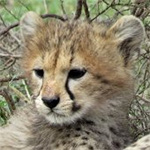
Tanzania is great to visit any time of year. Most people avoid the rainy months of April, May, and November. Some travelers like to go during the peak migration season of wildebeest, zebras and number of antelopes in Serengeti National Park, Ngorongoro Highlands and Masai Mara in Kenya. Not only that most people also like to lay on the sunshine of the Zanzibar beach lure water and white sand beaches as well as diving to the coral reefs.
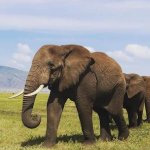
We use 5 or 7 passenger 4-wheel-drive Land Cruisers, Toyota Hiace as well as Land Rovers all with viewing roofs for the safaris. Take a note that a normal minibus or saloon can be used for transfer to and from the airport depending on the size of the group which is visit the country.
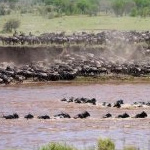
They are licensed, trained, friendly, and have years of experience in Tanzania safari! All of them speaks fluent English and others have additional languages of your mother tongue to meet your comfort and informative safari in Tanzania.
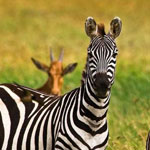
You can buy any drinks along your way to the Tanzania safari. There will be mini-markets in town and also you can have some at your hotel or lodge that you will spend an overnight there.
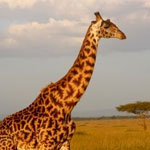
With modernized World most of the lodges and tented camps serve breakfast and dinner, typically buffet-style. European, Asian and African cuisines are served in a high standard. Due to the fact that you will be spending your afternoon doing game drive often you will have to take your lunch box with you.
If by chance the itinerary shows that you will take your hot lunch at the hotel then there is no need of packed lunch. Basically lunch at the lodge follows with a rest before proceeding with late afternoon game drive.
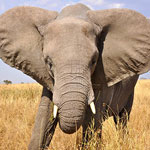
The great extraordinary animal kingdom migration is an annual migration of about 1 million wildebeest, 300000 zebras and 200000 gazelles migrating from Serengeti National Park to Ngorongoro crater and contiguous Masai Mara National Reserve searching for fresh grasses as well as water. This is a honeymoon (easy to hunt) period for the crocodile in Grumeti River and other carnivores such as lion and leopard while the migration is taking place. For more information on how the migration takes place please click here.
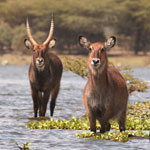
The best time to see the migration in Tanzania is January-March and June-August and in Masai Mara National Reserve in Kenya it is often best September-October. These are also the most popular times to go, so you will need to book well in advance.
You will see abundance of wildlife all year round. However it should be clear that changing of weather can affect this migration circular and a need for some two to three days in Serengeti National Park give you a wide chance of view migration properly.
Whether you are looking to explore the wildlife of the Serengeti, or begin your expedition up Mount Kilimanjaro, we have something suitable for all of you. Get in touch with us today and our team of specialists will help build your experience of a lifetime to Tanzania
Read More